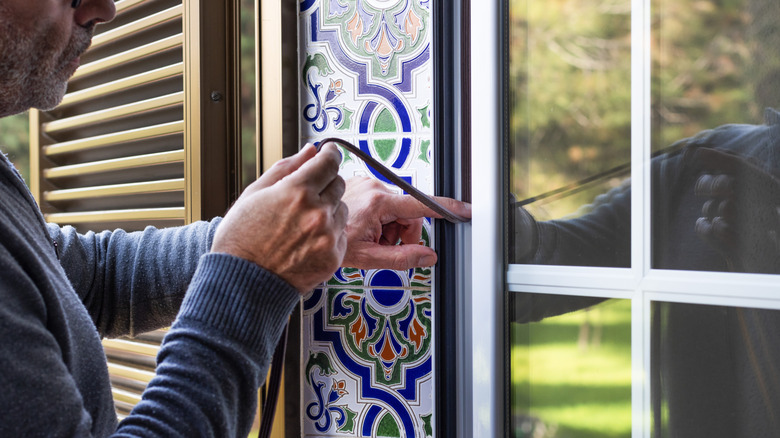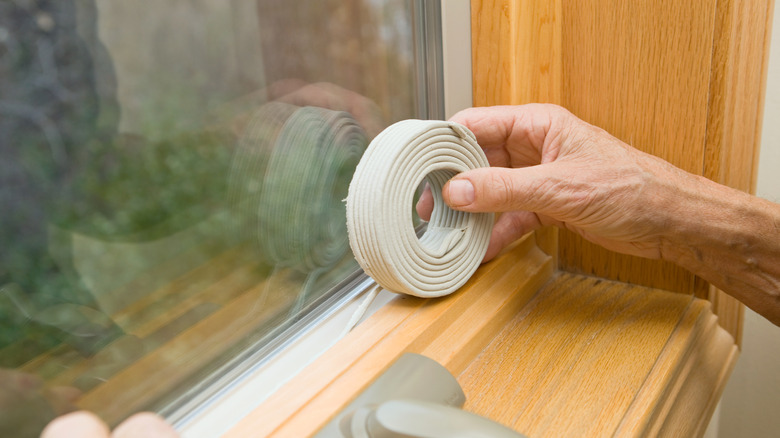How Effective Is Weatherstripping Windows For Lowering Energy Costs?
As the fall and winter seasons start to set in, it's undoubtedly time to think about how to prep your home for cold weather. Plunging temperatures, wet conditions, and strong winds can wreak serious havoc on your home's energy bills, making your furnace run longer than necessary. It's well known that fall is the best time to get your home's siding inspected for major winter savings, but there's another project that is also crucial for helping to lower your energy costs – weatherstripping your windows.
While an HVAC inspection and tune-up is a great start for keeping your home warm and toasty, sealing air leaks with weatherstripping is a simple yet impactful home energy upgrade that can lower your energy bills even further. This crucial step helps keep warm air in and cold air out, allowing your heating system to work more efficiently. It also lowers your energy costs by reducing cold air drafts, which account for a significant percentage of a home's total heat loss. Overall, this minimizes the amount of time your furnace or heat pump needs to run since there's minimal cold air seeping into your home. Homeowners and renters can dramatically reduce drafts in their home with weatherstripping, and depending on the existing condition of their windows and doors, lower energy costs anywhere from 5% to 30%.
What to know about weatherstripping your windows
There are a few ways to weather strip your windows and keep extreme temperatures at bay. For a quick DIY fix to stop drafts immediately, use self-adhesive foam tape to cushion and seal the gap between the window sash and frame. This helps to block air leaks when the window is closed, and is a perfect project for renters or homeowners looking for a simple, non-permanent, and highly affordable way to boost energy efficiency right away.
For a more effective solution that will also help garner the highest energy savings, you can install V-strip (or tension seal) weatherstripping. This is a durable product (in either metal or vinyl) that creates a spring-like, permanent seal in the channels where your window slides. Overall, this gives you a much tighter and longer-lasting air barrier against cold drafts. This option can also be DIYed for intermediate DIYers, but if you're not sure what you're doing, it's best to hire a home energy or window professional. For the best chance of lowering your energy costs significantly, you should weatherstrip all doors and windows to create a comprehensive air barrier around your entire home.

